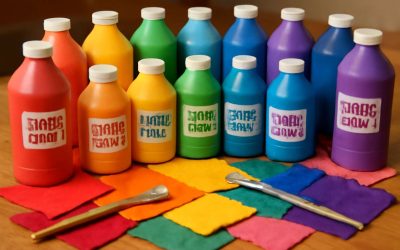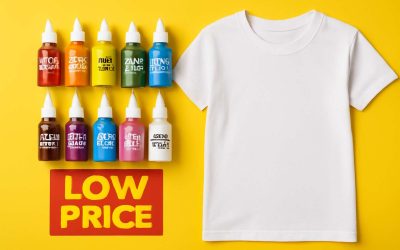Clothing fabric paint is a great medium for creating one-of-a-kind designs on shirts, hats, bags and more. This type of paint is usually non-toxic and water-based, which makes it easy to clean up if something spills.
Before you start painting, choose the right tools for your project and make sure you have a dry, clean space to work in. Some people prefer to use a brush, while others prefer to paint with fabric markers, which offer more control over a specific area.
Test out your paints on a small piece of the fabric you plan to paint first. This will ensure that you find the best one for your project, as different formulas react differently with each type of fabric.
Pre-wash your fabric if possible before painting to remove any chemicals and starches that may be in the fabric when it was made or shipped from the factory. This will also help return the fabric to its original size and allow it to be better absorbed by your paints.
Place a piece of cardboard or thick paper underneath your fabric to prevent the paint from bleeding through onto the surface you’re working on. This can be especially important if you’re painting a two-layer fabric, like a t-shirt or tote bag.
Trace your design with a pencil or disappearing ink pen before you begin painting to keep your design straight and make the process go more smoothly. If you’re using a stencil, tape it down with masking tape before tracing it so that it doesn’t shift and move during the painting process.
Try out “puff” paint for a three-dimensional look that dries with a raised finish to make your design more visible. This is a fun option to try with kids, but be aware that it will take longer for the puff paint to dry and is best used on light fabrics.
Add texture to your painted fabric by using mediums such as fabric glue, spray paint or even wax or another substance that will resist the paint dries and leave behind a pattern in the finished product. You can also add additional layers of paint for a more elaborate design.
When you’re ready to begin painting, dip your paintbrush in the fabric paint and start painting section by section. This way, you can avoid accidentally smudging wet paint with your hand while you’re working and can ensure that the whole project is covered evenly.
Once you’re done painting, lay down a cotton sheet to protect your project and prevent the paint from chipping off in the wash. You can also iron the entire piece of fabric to set the paint and give it a permanent look.
Some clothing fabric paints are fast-drying, while others will require heat setting for long-lasting results. This step can be a bit tricky, so read the instructions closely. If you need help, consult the manufacturer or ask other crafters about their experience with the brand of paint you’re considering.



0 Comments